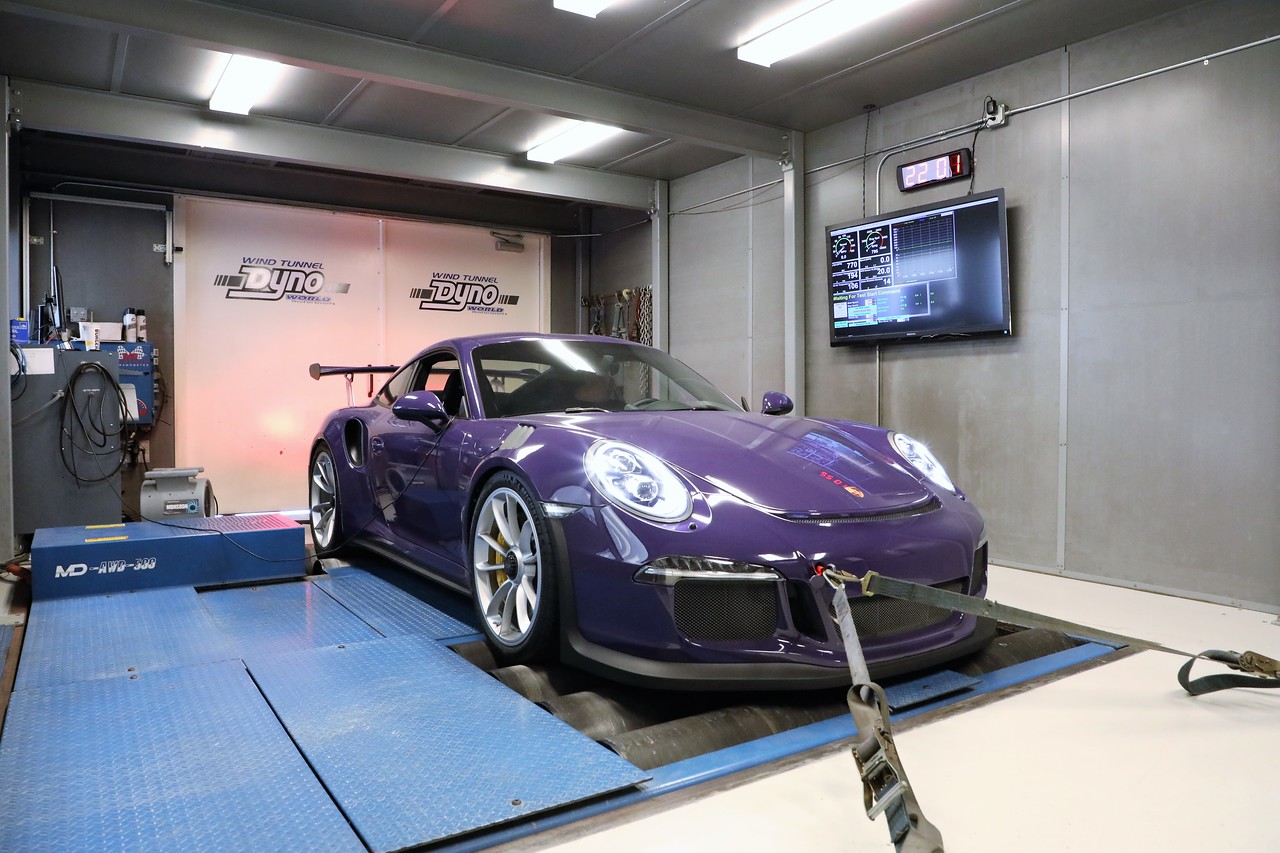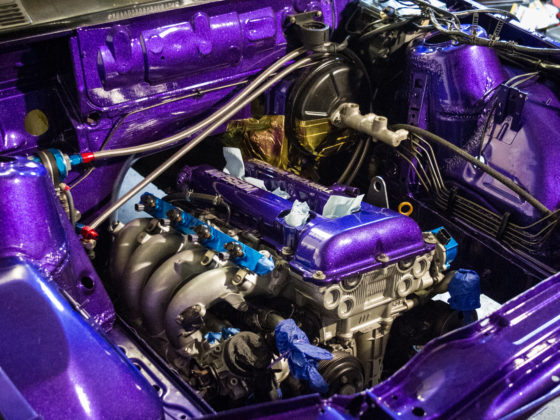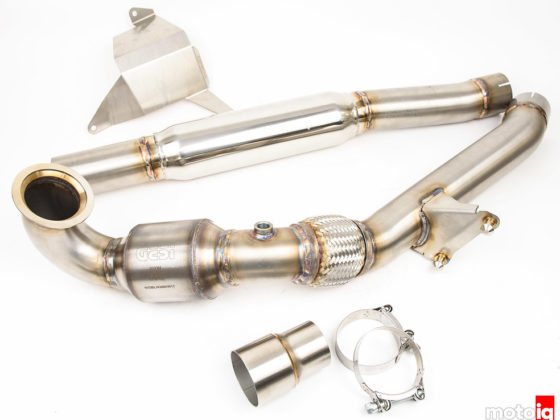Since our car is direct injection, it runs a super lean AFR of over 13.2:1 even at the high load parts of the map. This is with the cars 13:1 compression. The lean AFR and the high compression is probably why the car is so sensitive to air temp. The ECU immediately reacts to prevent the engine from going into detonation if intake or coolant temperatures climb.
To be super conservative considering our lame 91 octane fuel. Mitch added timing to some of our cars multiple spark maps (Mitch says late model cars like this can have up to 100 different maps and you need to know what each one does). Mitch wanted to duplicate the GT3 ignition map as a starting point but we wanted to be more conservative as the RS engine is super expensive! So Mitch at our request split the difference between the GT3 and RS timing curves.
Mitch also richened up the AFR to around 12.5:1 to be a little more conservative and to possibly make more power with our shitty 91 octane pee water.

Mitch also did a bunch of part-throttle and transient passes to help tune throttle response and help with low-speed drivability. This is stuff a lot of tuners skip because it’s tedious.

Our gains with Mitch’s tuning were amazing! Our car woke up with a maximum gain of 25 whp with a peak gain of 23 whp. Torque saw a maximum gain of 14 lb/ft and a peak gain of 7 lb/ft. Our car made 499.8 whp or 500 whp for all practical purposes. This was on a day with temperatures far from optimal for the car. The gains we experienced are the highest we have ever experienced on an NA late model car with a tune.
Surprisingly the power increases were present across the board from right off idle on up which means a lot of power was gotten under the curve. The slight amount of power loss we experienced at low RPM with the headers was now back with more! With the tune, the increase in power is readily apparent with the free-revving engine even more willing to rev.
We also noticed that the engine ran a lot more smoothly after the tune and the engine now has a smoother, less harsh exhaust note, probably due to the richer AFR with the combustion possibly no longer being finely held to the edge of detonation by the electronics. We have also noticed that the car doesn’t seem to lose so much power on a hot day. If we had run more timing like Mitch wanted to, we would have had even larger gains and if we lived in a different state and could run his normal 93 octane ignition map, the results would probably be even better!
We are super pleased with how our car is performing and to our knowledge, this is one of the most powerful GT3’s that we have seen a dyno chart for. We asked Mitch if he could figure out flex fuel which would really help us get more out of engine safely. He just sort of winked so well, maybe!
If you like Project GT3RS check out all the stuff we did!
Sources




7 comments
Wow that is quite a fan!! It is drawing 223 kW of power. ONE averaged sized house, with every circuit loaded could maybe say draw 12kW…
Great to see the skillz of a real tuner, extracting even more power from a high strung engine of this caliber.
Do you know Mike, how much can be expected. If used 93 oct and in a cooler state/country with like 50-70 outside temps?
Also consider this motor is direct injected “only” . would it handle to run E85 on stock injectors with only bigger fuel pumps?
I think that there is another 10-20 hp from tuning for 93 octane and for keeping the intake air temp below 78 degrees. One thing with the tuning and richer AFR, I feel that the car is no longer so near the edge of detonation with it’S 13:1 compression ratio, hence it is not so sensitive to intake air temp. I think Mitch has found that if fuel was taken out of the equation, the engine makes the best power with about 6 degrees more total advance than what we are currently running on the 91 octane map. This could be accomplished with E85. The main issue with E85 is how it will affect the high-pressure fuel pump since ethanol has little lubricity. On some cars like Subarus, this has been an issue and they can only tolerate something like a 50/50 mixture of E85 to gasoline. There is also the possibility of running an additive to pre-mix some lube in. One other this is that I am sorta scared to experiment too radically on a super expensive motor! Or at least being the pioneering guinea pig.
Thanks for the info Mike.
I forgot , of course it has a cam driven high pressure fuel pump because of the direct injection.
No simple drop-in , into the fuel tank .
I guess it would need a different profile of the lope on the camshaft to increase fuel pump capacity. ( expensive! )
Interesting to read, how you believe the fuel pump will not like E85 because of loss of lubricity.
But for exp, it seems to be no issue on the Ford’s coyote motors
Now the 2018 motor with it’s both direct and port injection. Seems to handle with easy, switching over to E85. Without needing anything upgraded.
I guess that can be consider a big benefit of the duel fuel systems on top of not having the carbon build up issues of the direct only motors.,
But I guess the downside is, the complexity and expense when it comes to maintenance down the road.
Yes, some other cars have issues with the high-pressure pump with ethanol and this is an expensive car to experiment with! It’s not so much pump capacity in this case but galling of the piston and bore of the pump which is under thousands of psi of pressure. Some cars are fine and others mess up after a few thousand miles.
Video needed! 9000rpm of pure eargasm.
That is coming but Jeff is lagging.